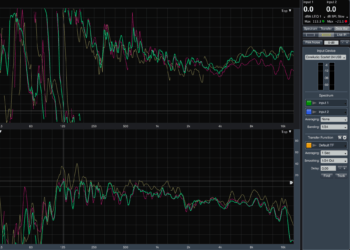Good acoustics is absolutely crucial to record and mix music. This ensures that the music sounds as good in most environments. Room acoustics refers to how sound waves behave within a room. Every room, its size, shape and the objects in it determine how it will react to different frequencies of sound. Ideally, the acoustic response of a room should be calculated before it is even designed or built. However, if the space already exists and one is setting up a studio space, with an existing space, remember that acoustics effects sound quality. After all, everything from tracking, mixing, and mastering, is based on what one hears during sessions in the control room, along with the effect the live recording space has on the sound that is captured in the mics. So, the acoustics of a room, needs to be altered if necessary, to turn the space into a professional audio setup.
There are mainly three things that can take place with sound energy in a room- it can be absorbed, reflected, or diffused. If you have an empty room with hardwood floors and bare walls, there could be a lot of echo in the sound. The placement of speakers can also cause acoustic issues. In addition, room modal problems can mean that you are not hearing certain frequencies in the room because it is being smothered. In this case, low frequency energy, which refers to any energy that is less than 100 cycles, must be treated. Besides speaker placement and listener location, the side walls, ceiling and floor must also be taken into account while making acoustic alterations in the room.
First Order Reflections
First order reflections refer to the first locations where sound reflects between your ears and the speakers. Often, this is a wall, the floor, and the ceiling at a point roughly midway between the seating position and the front of the speaker. First order reflections can be found only a few feet in front of your main front speakers directly to the left and right of the speaker locations as well as on the ceiling. When tuning a room to make it suitable for recording, the first reflections are commonly treated with either diffusion or absorption. Absorption can be aided using simple, additions such as drapes, fabric walls or all the way up to purpose-built acoustical treatments. Installation of treatments in these areas can be immensely beneficial to an audiophile or recording studio installation.
Low Frequency Issues & Speaker Placement
When it comes to low frequency issues, frequencies below 100 Hz. within a room can only be managed and not always eliminated. That’s why some people move to larger rooms. The room can be made smaller using diaphragmatic absorbers around room boundaries. When it comes to the placement of speakers, they must be at equal distance from both the right and left channel side walls. You can not have one speaker closer to the side wall than the other. Also, the location where the listener sits must be at a certain distance from the speakers and rear wall. The speakers and listening position form a ‘sound triangle’, namely the apexes of a triangle and it is this positioning of all three aspects that must be balanced with room dimensions and low frequency pressure levels.
Floor and ceiling reflections also influence the mix and music playback. They must be managed with the same approach as the side walls. They account for 15 – 20 % of what is being heard and need to be treated too. There are certain rooms with a specific width, height, and length that cannot be used as recording spaces because low frequency energy can not be managed at all despite acoustic alterations. In these cases, one just has to find another room size.
Acoustic Prediction Software
Determining the acoustic response of a room is now far easier with acoustic response prediction software that is available. While professional acousticians used their ears as their primary tool earlier, there is now a sophisticated array of software-based systems that let them predict and track reflected sound in almost any kind of environment. These softwares are the only way to be 100% certain of a room’s acoustic response and therefore the type of treatment that it requires. Testing a room using acoustic room testing software, a test microphone and special meter is advised to ensure maximum accuracy. You can then be assured of a great sounding space and specifics such calculating the exact amount of acoustic paneling required to properly control the acoustics of a space can be determined with great accuracy. Rational Acoustics SMAART, an acronym for Sound Measurement Acoustical Analysis Real Time (figure out issues once room is ready), Renkus-Heinz’s SysTune, AFMG’s EASE (allows you to predict the acoustic response even before the room is built), and SATLive are all options that are available.
Often the acoustic qualities of rooms are an afterthought and corrective measures have to be implemented later at great cost and not always optimal results. Since acoustic issues can even trip up experienced engineers and producers, acoustic prediction software are a great way to ensure the best results in all studio endeavors. They analyze the space, and, help to optimize it for the most neutral, most reliable sound quality that it can provide.


